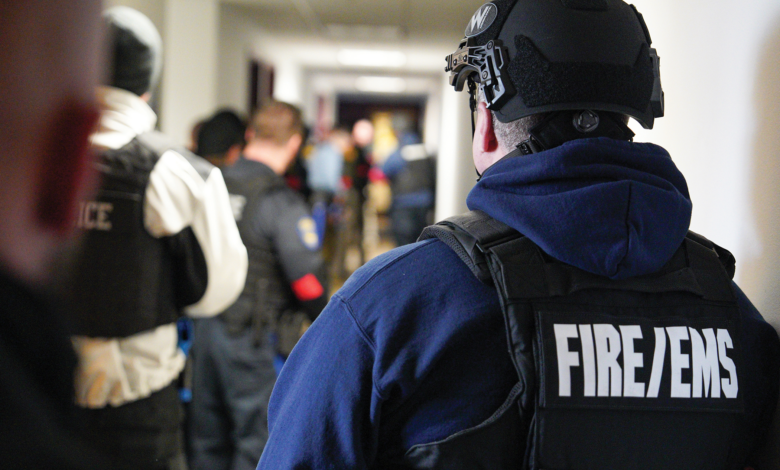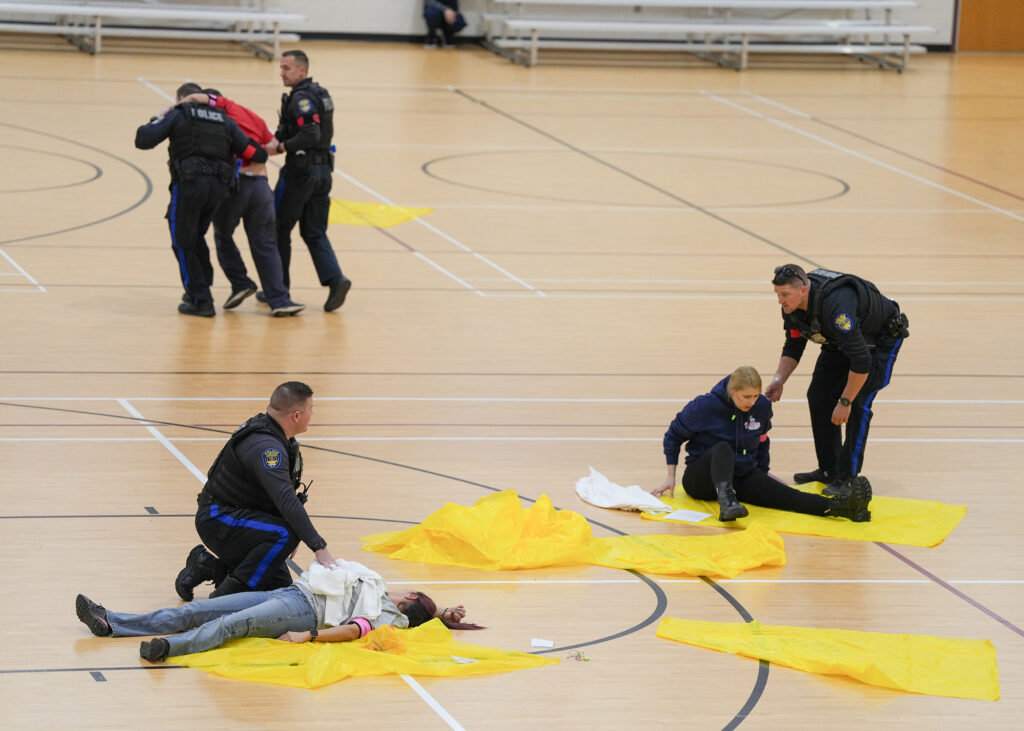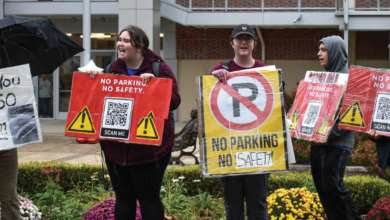
Hostile threat training held over break
Summary
Rider completed an emergency preparedness training on Jan. 12 that recreated the event of a hostile threat on campus.
By Jake Tiger
Rider completed an emergency preparedness training on Jan. 12 that aimed to recreate the event of a hostile threat on campus, working with a number of groups throughout the state.
The drill took place in the Student Recreation Center from 8 a.m. to about 10 a.m., with multiple phases transpiring inside and outside the building.
‘A good start’
The training sourced volunteer actors that played the role of victims and a perpetrator. Actors met in the Mercer Room in Daly Dining Hall prior to the training. Fake injuries and blood splatters were applied to them and they were given instructions before moving to the SRC. Some actors were supplied with scripts of cries for help to give a more convincing performance.
“I would have loved to have [the drill] during school so we could have brought in our theater majors … so they could really put on a convincing performance for these guys,” said Capt. Matthew Babcock of Rider Public Safety.
Including first responders, volunteers and actors, exactly 289 people participated in the recreation.
At 8:21 a.m., text and email alerts were sent out using the new Rider Alert system announcing the start of the training: “This is a drill. The drill has begun in the SRC. This is a drill.”
Emergency vehicles began responding to the SRC from differing routes, most carrying a handful of officers that exited the vehicle and stepped into the SRC in a single-file line.
All law enforcement participating in the drill wore red armbands to distinguish themselves throughout the drill, and carried prop firearms carved from red and blue plastic.
“They did not have any kind of knowledge of what they were coming into, which was good because you want to be off-the-cuff … so that when they come in, they have to react based on their training,” said Babcock. “Most of them are not familiar with the school, so they don’t even know the layout of the campus or this building.”
On the courts of the SRC, officers participated in a drill that was meant to replicate a typical graduation ceremony, as actors were scattered across the open space, each demanding the officers’ attention with mock life-threatening injuries.
“Any training is good training for them,” said Babcock. “I believe they were going to go for a commencement-type exercise. … Obviously if you’re going to be responding to one of our academic buildings or residence halls, completely different set of scenarios that they’re going to have to work through, so this is a good start.”
The officers then moved to the second-floor offices of the SRC to simulate a close-quarters encounter with a hostile threat in the hallways.
Outside of the SRC, police piloted a drone with a 360-degree camera that relayed footage of the drill to the incident command center, a high-tech police trailer parked behind the building.
At 10:04 a.m., a second and final Rider Alert was sent out, reading, “This concludes today’s drill. Thank you for your cooperation.”
“It was an excellent recreation,” said James Waldon, Rider’s director of Public Safety, who was a law enforcement officer for over 30 years. “It’s always good when law enforcement agencies get together and train together … and make the mistakes here, because when the real thing happens, you’ve trained on it.”

A culmination of forces
According to Charlie Ambio, the New Jersey Office of Homeland Security and Preparedness division director of preparedness, the training was a collaborative effort from multiple New Jersey groups: the NJOHSP, Rider, the Mercer County Rapid Response Partnership, the Mercer County Office of Emergency Management and the state police.
“The purpose of this exercise being conducted that day was to test the MCRRP and the county’s response plan to an active shooter incident,” said Ambio.
According to Babcock, the drill included participants from each police department in Mercer County, along with several fire departments, local EMS agencies and public safety officers from Rider, The College of New Jersey and Princeton University.
“It’s great to have our outside partners come to the university, learn the landscape,” said Babcock. “We drew all of Mercer County, our partners from the state, and anytime we can get them on campus so that they can learn what’s going on and better understand how they need to respond to the campus, I think that’s huge.”
Multiple Rider administrators said the training was not in response to the hostile threat hoax that occurred April 3, 2023, and that preparations for the training began months before the incident. The NJOHSP confirmed this, with their records stating that Rider was selected for the drill in December 2022.
“Basically, you’re testing and evaluating your plans and policies,” said Ambio. “You look at what worked, what didn’t work and then maybe sometimes you come back into that cycle of rewriting plans or changing plans, educating people, retesting them.”
Rider has held similar drills in the past, with the most recent example taking place two years ago in Lynch Adler Hall, which was of a smaller scale and only included local police, according to Babcock.
“The next time we do this, I would love to have it when school’s in session, so we get a much larger response from the student population,” said Babcock. “It’d be very important for them to be involved to actually see what happens, get [students] a little bit of training … and it would increase the amount of actors we could have had today to make this an even more realistic scenario.”
Currently, there are no plans for similar drills on Rider’s campus going forward, but Public Safety officials expressed an interest in continuing them.
“I would like to see this twice a year, [that] would be fantastic,” said Babcock. “The more we can get our emergency response team here, the more practice they get, the better we are in case anything were to ever happen.”
Active shooter response training resources can be found on the NJDOHSP’s website at njohsp.gov/active-shooter-response.


